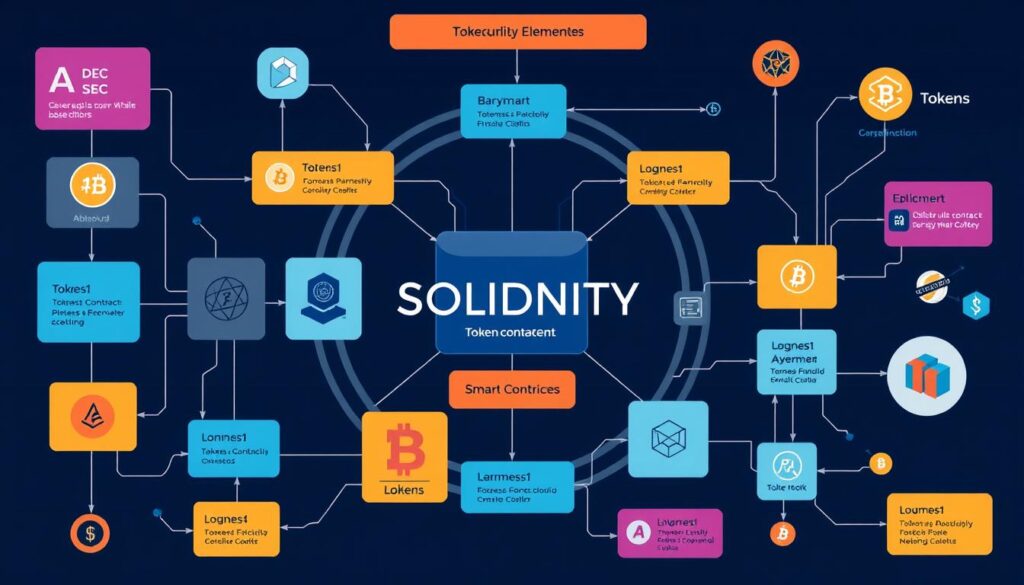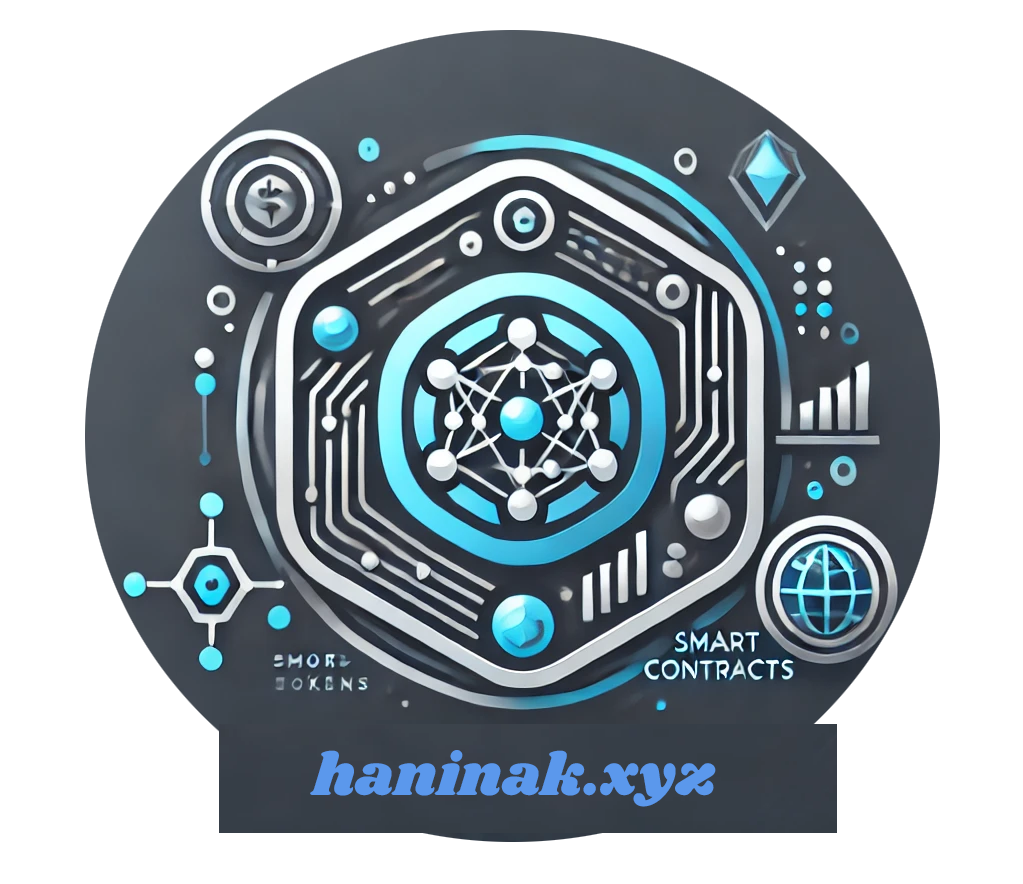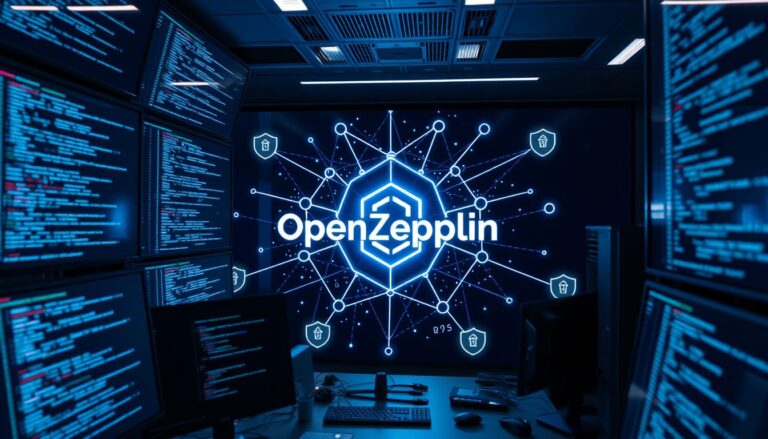What role does Solidity play in developing Tokens?
Solidity is a key programming language for token development on Ethereum. It’s a statically typed, object-oriented language. This makes it perfect for writing smart contracts that run smoothly on the Ethereum Virtual Machine (EVM).
Solidity is crucial in the blockchain world. It’s the main language for creating decentralized apps (dApps) and automating Ethereum transactions. Its syntax, inspired by JavaScript, C++, and Python, helps developers easily get into blockchain tech.
In DeFi, Solidity is also very important. It lets developers build protocols for lending, trading, and yield farming. This way, users can interact securely without needing traditional financial middlemen.
Solidity also helps in creating token standards like ERC-20 and ERC-721. These standards make sure apps and tokens work well together. They make it easy to launch new tokens by defining their core functions.
Using Solidity, developers can make smart contracts that are secure and efficient. This lowers costs and boosts efficiency. Solidity’s ability to handle complex algorithms and its wide range of features make it vital for building strong, innovative apps.
Understanding Solidity and Token Development Fundamentals
Solidity is a key programming language for creating tokens on the Ethereum blockchain. It’s a statically-typed, object-oriented language, influenced by JavaScript, C++, and Python. Solidity has features made just for blockchain apps. It helps build smart contracts that manage token properties, supply, and transfers.
Definition and Core Components of Solidity
Solidity is made for creating decentralized apps (dApps) and smart contracts on Ethereum. Its design and features are perfect for token projects and blockchain initiatives. Solidity’s main parts are:
- Contract Definitions: The contract is Solidity’s core unit. It holds the logic and data for an app or token.
- State Variables: These variables keep track of the contract’s state, like token balances and ownership.
- Functions: Solidity functions are the actions that can be done in a contract. This includes token transfers and minting.
Smart Contract Basics for Token Creation
Smart contracts in Solidity are vital for token development. They set the rules and behaviors of a token, like its supply and how it’s transferred. Developers use Solidity to write the code for a token’s life cycle, making sure it works right in Ethereum.
The EVM and Token Implementation
The Ethereum Virtual Machine (EVM) runs Solidity-based smart contracts. It makes sure they work the same everywhere in the Ethereum network. By putting token contracts in the EVM, developers can link their tokens with Ethereum, making them work with other apps and services.

The technology of Tokens, its techniques, and everything related to it
In the blockchain world, tokens are digital assets with many uses. They can be utility tokens, security tokens, or non-fungible tokens (NFTs). Creating tokens means setting their name, symbol, and total supply. It also involves using advanced features like governance and staking.
Token technology has led to DeFi apps, digital collectibles, and real-world asset tokenization. Standards like ERC-20 and ERC-721 make it easier to build tokenization, token classification, and token embedding projects. This is thanks to the Ethereum ecosystem’s compatibility and interoperability.
Text preprocessing and natural language processing are key in token development. They improve how tokens work and feel to users. These technologies make transactions smooth and help with decentralized governance.
| Token Type | Description | Example |
|---|---|---|
| Utility Token | Tokens that provide access to a specific product or service within a blockchain-based ecosystem | Ethereum (ETH) |
| Security Token | Tokens that represent a traditional financial asset, such as a stock or bond, and are subject to securities regulations | Tokenized real estate |
| Non-Fungible Token (NFT) | Unique, non-interchangeable tokens that represent digital assets, such as art, collectibles, or in-game items | CryptoKitties |
As blockchain and cryptocurrency evolve, tokens lead the way in innovation. Understanding token development can help developers and entrepreneurs. They can use tokens to create new, exciting projects that shape the digital economy’s future.
Token Standards and Implementation in Solidity
The Ethereum blockchain has developed token standards for creating digital assets. These standards, outlined in Ethereum Improvement Proposals (EIPs), help ensure tokens work well together. They provide a clear guide for making tokens and keeping the Ethereum network compatible.
ERC-20 Token Standard Architecture
ERC-20 is the most popular token standard. It outlines how fungible tokens should work. These tokens can be traded, transferred, and used in dApps and wallets easily. Solidity developers often use OpenZeppelin or create custom contracts to follow this standard.
ERC-721 for NFT Development
ERC-721 is for non-fungible tokens (NFTs). Each NFT has its own unique identifier and metadata. Solidity developers use ERC-721 to create and manage NFTs. This allows for digital collectibles, in-game items, and more.
Advanced Token Features and Functions
ERC-20 and ERC-721 are great starting points. But, Solidity developers can add more features. They can include token burning, minting, and access control. These additions help tailor tokens for specific needs and open up new possibilities in the Ethereum ecosystem.
Solidity’s flexibility and the Ethereum token standards let developers create many digital assets. From utility tokens to unique collectibles, the possibilities are endless. By mastering these standards, developers can build innovative, interoperable applications. These contributions help the Ethereum network grow and evolve.
Smart Contract Security and Best Practices
Keeping smart contracts safe is key in blockchain and DeFi. Developers must follow best practices to avoid risks. This includes thorough testing, code audits, and using libraries like OpenZeppelin.
They should know about common threats like reentrancy attacks and integer overflows. Using gas optimization and access control can help. This makes smart contracts more secure and efficient.
Regular code reviews and testing on a testnet are essential. Getting certified by reputable firms is also important. Tools like Slither, Mythril, and Securify help find vulnerabilities. By focusing on security, the Ethereum ecosystem can grow and reach its full potential.







